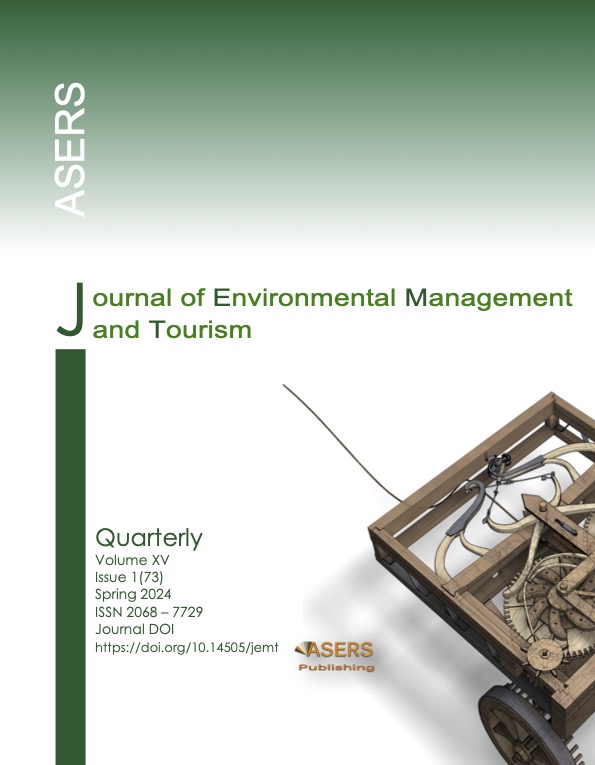Sustainability of the Sumedang Larang Palace as a Tourism Attraction of the Kingdom of Sunda Heritage in West Java
Abstract
Sumedang Larang Palace is the last Sunda Kingdom Palace in West Java today. This study aims to explore the supporting elements of the Sumedang Larang Palace as a tourist attraction for the Sunda Kingdom heritage in West Java. This type of research is descriptive qualitative research. The place of this research is the Sumedang Larang Royal Palace, located in the city of Sumedang. The primary data used in this study were obtained by interview, observation, and documentation. The results showed that the Nazir Waqf Foundation of Sumedang Prince mandated the Sumedang Larang Palace. In managing the Palace as a heritage tourism destination, it has been regulated in the organizational structure of the Foundation. Employee management is carried out by human resource management, who records, directs, supervises, and performs operations. Furthermore, through its management, the Foundation also maintains and adequately manages the collection of historical artifacts of the Sumedang Kingdom at the Geusan Ulun Museum. Resources are collected independently by managing palace assets. The Foundation also cooperates with external parties to organize and manage the Palace by involving the government, academia, the private sector, and the media.
References
[2] Arumugam, A., Nakkeeran, S., and Subramaniam, E. 2023. Exploring the factors influencing heritage tourism development: A model development. Sustainability, 15(5): 1-18. DOI: https://doi.org/10.3390/su151511986
[3] Baskoro, P. P. A., Rizkiyanto, R., and Indrosaptono, D. 2014. Museum kontemporer Jakarta. Imaji, 3(4): 887-894. Available at: http://eprints.undip.ac.id/44138/2/Padmo_Prabowo_Aji_
[4] Boboc, R. G., Bautu, E., Girbacia, F., Popovici, N., and Popovici, D-M. 2022. Augmented reality in cultural heritage: An overview of the last decade of applications. Applied Sciences, 12(19): 9859; DOI:https://doi.org/10.3390/app12199859
[5] Buzon, C. M., Perez-Romero, A. M., Castro, J. L. L., and Jerbania, I. B. 2021. Photogrammetry as a new scientific tool in archaeology: Worldwide research trends. Sustainability, 13(9): 1-27. DOI:10.3390/su13095319
[6] Estrada Cruz, M., Verdujover, A. J., and Gomezgras, J. M. 2019. The influence of culture on the relationship between the entrepreneur's social identity and decision-making: Effectual and causal logic. BRQ Business Research Quarterly, 22(4): 226-244. DOI: https://doi.org/10.1016/j.brq.2018.10.002
[7] Fino, M. D., Galantucci, R. A., and Fatiguso, F. 2023. Condition assessment of heritage buildings via photogrammetry: A scoping review from the perspective of decision-makers. Heritage 2023, 6(11): 7031-7066. DOI: https://doi.org/10.3390/heritage6110367
[8] Franceschini, F., Maisano, D., and Mastrogiacomo, L. 2016. The Museum of errors/horrors in Scopus. Journal of Informetrics, 10(2): 174-182. DOI: https://doi.org/10.1016/j.joi.2015.11.006
[9] Gantina, D., Budiman, S. F., Nurbaeti., and Gunawijaya, J. 2021. Museum Prabu Geusan Ulun Kabupaten Sumedang sebagai daya tarik wisata Kabupaten Sumedang. Jurnal Ilmiah Pariwisata, 26(3): 233-242. DOI:https://doi.org/10.30647/jip.v26i3.1583
[10] Gao, B., and Yu, S. 2024. Upgrading museum experience: Insights into offline visitor perceptions through social media trends. Emerging Trends in Drugs, Addictions, and Health, 4, 100137. DOI:https://doi.org/10.1016/j.etdah.2023.100137
[11] Green, T. A., Hutchings, P. A., Scarff, F. R., Tweedley, J. R., and Calvera, M. C. 2023. Research publications of Australia’s natural history museums, 1981–2020: Enduring relevance in a changing world. Enduring relevance in a changing world. PLoS ONE, 18(6): e0287659. DOI:https://doi.org/10.1371/journal.pone.0287659
[12] Hardy, W. Y., Setianti, Y., and Dida, S. 2021. Destinasi taman wisata alam Gunung Tampomas: Studi literatur pengembangan branding ekowisata. Jurnal Destinasi Pariwisata, 9(1): 51-58. DOI:https://doi.org/10.24843/JDEPAR.2021.v09.i01.p06
[13] Hermawan, D., Sofian, M., and Kuswara. 2017. Improving the function of The Prabu Geusan Ulun Museum in Sumedang Regency as a tourist attraction for historical and cultural education. Panggung, 27(4): 319-333. DOI: http://dx.doi.org/10.26742/panggung.v27i4.288
[14] Laksmi, G. W., Haryono, J., and Rahmanita, M. 2023. Identifikasi Komponen daya tarik wisata dan manajemen pengelolaan Museum Prabu Geusan Ulun sebagai wisata pusaka di Sumedang. Yume Journal of Management, 6(1): 15-27. DOI: https://doi.org/10.37531/yum.v6i1.3497
[15] Luo, L., et al. 2019. Airborne and spaceborne remote sensing for archaeological and cultural heritage applications: A review of the century (1907–2017). Remote Sensing of Environment, 232: 1-34. DOI:https://doi.org/10.1016/j.rse.2019.111280
[16] Luthfiatin, G., and Abdillah, A. 2022. Sejarah penyebaran Islam di Sumedang Melalui Pendekatan Budaya. Jurnal Priangan, 1(1): 48-59. Available at: https://journal.uinsgd.ac.id/index.php/priangan/article/view/19309
[17] Muhsin, M. 2008. Kerajaan Sumedang Larang. Bandung. Fakultas Sastra Universitas Padjajaran.
[18] Peleggi, M. 1996. National heritage and global tourism in Thailand. Annals of Tourism Research, 23(2): 432-448. DOI: https://doi.org/10.1016/0160-7383(95)00071-2
[19] Priyomarsono, N. W. 2023. Approaches to revitalization of areas with historical and cultural values: The Baluwerti Royal Surakarta Palace, Surakarta, Indonesia. ISVS e-journal, 10(4): 90-101.
[20] Richards, G. 2018. Cultural Tourism: A review of recent research and trends. Journal of Hospitality and Tourism Management, 36: 12-21. DOI: 10.1016/j.jhtm.2018.03.005
[21] Sellato, B. 2015. Sultans’ palaces and museums in Indonesian Borneo: National policies, political decentralization, cultural depatrimonization, identity relocalization, 1950-2010. Archipel, Études interdisciplinaires sur le monde insulindien, 89: 125-160. DOI: 10.4000/archipel.494
[22] Thresnawaty, E. 2011. Sejarah Kerajaan Sumedang Larang. Patanjala: Jurnal Penelitian Sejarah dan Budaya, 3(1): 154-168. DOI: http://dx.doi.org/10.30959/patanjala.v3i1.276
[23] Tubagus, M. R., Yanti, N., and Sarip, I. 2020. Fungsi Tradisi Ngumbah Pusaka Prabu Geusan Ulun Sumedang Larang. Jurnal Budaya Etnika, 4(1): 3-22. DOI: http://dx.doi.org/10.26742/be.v4i1.1559
[24] Viejo-Rose, D. 2015. Cultural heritage and memory: untangling the ties that bind. Culture and History Digital Journal, 4(2), e018. DOI: https://doi.org/10.3989/chdj.2015.018
[25] Xiao, W., et al. 2018. Geoinformatics for the conservation and promotion of cultural heritage in support of the UN Sustainable Development Goals. International Society for Photogrammetry and Remote Sensing (ISPRS), 142: 38. DOI: https://doi.org/10.1016/j.isprsjprs.2018.01.001
Copyright© 2025 The Author(s). Published by ASERS Publishing 2025. This is an open access article distributed under the terms of CC-BY 4.0 license.
